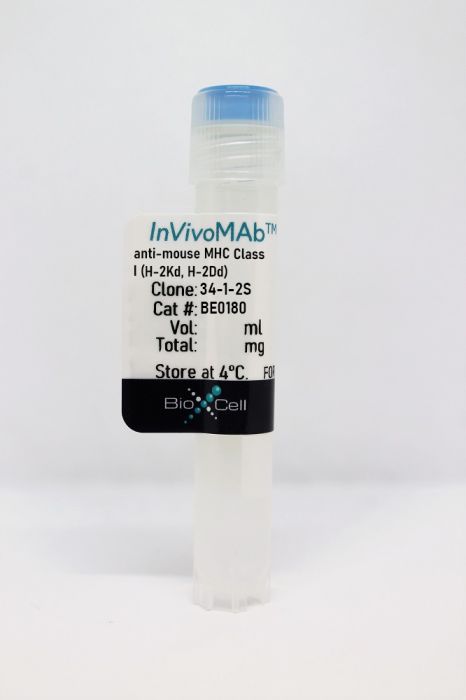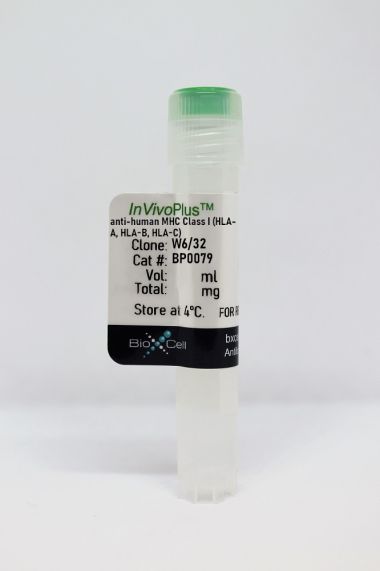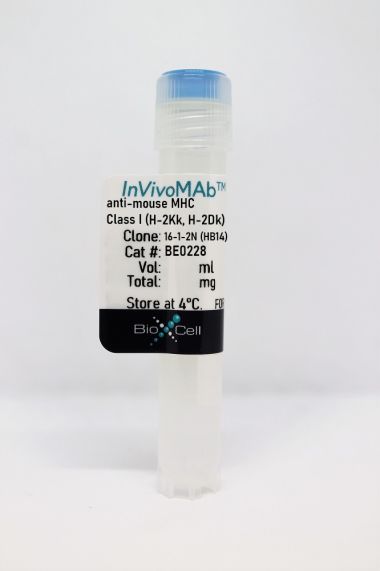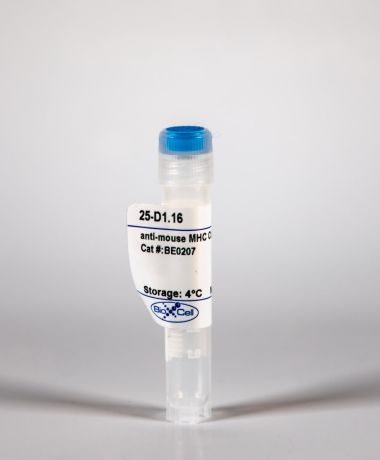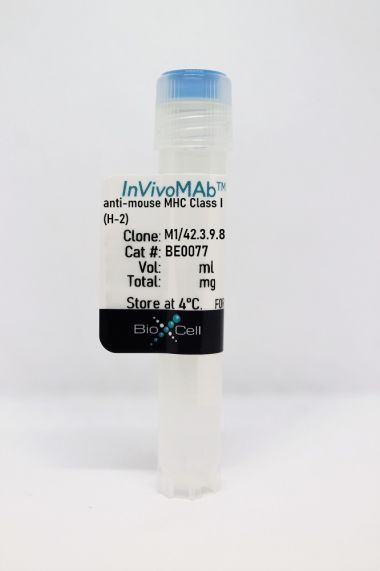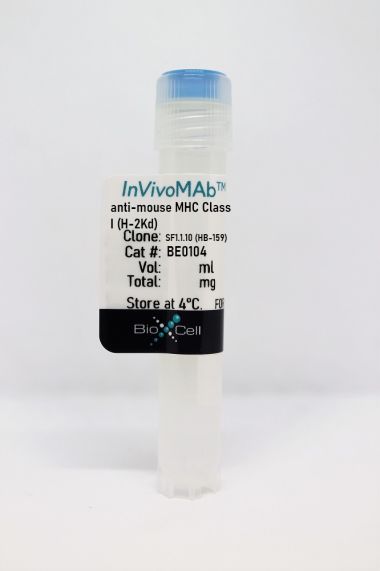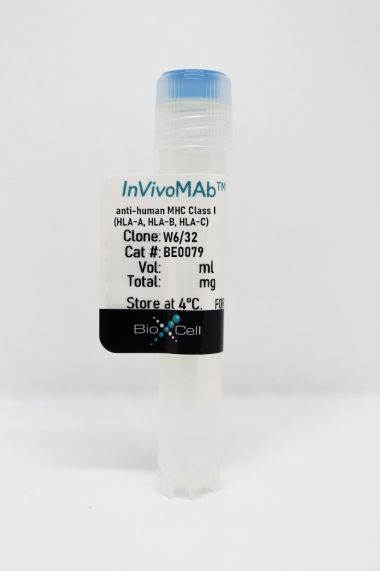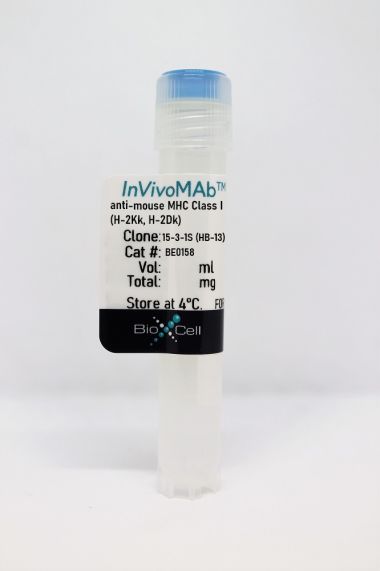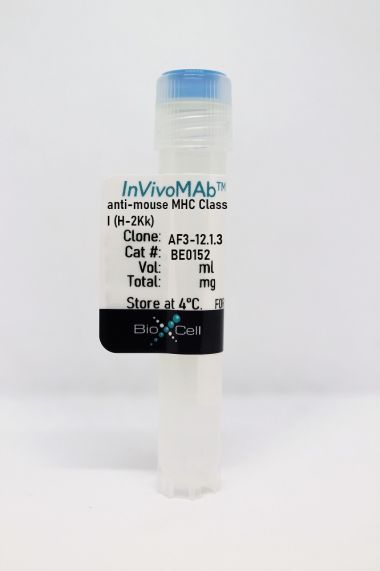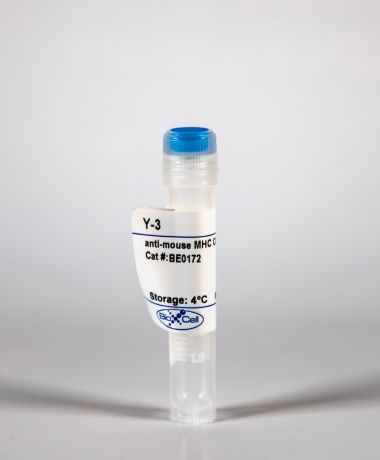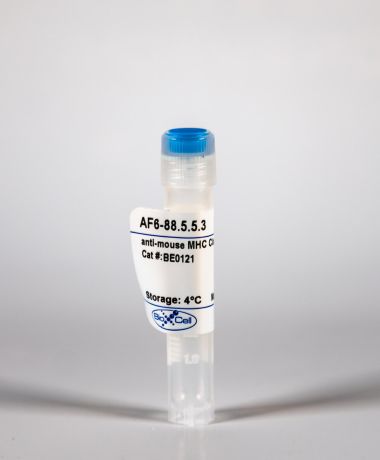InVivoMAb anti-mouse MHC Class I (H-2Kd, H-2Dd)
Product Details
The 34-1-2S monoclonal antibody is reported to react with the mouse H-2Kb and H-2Dd MHC class I alloantigens. MHC class I antigens are heterodimers consisting of one alpha chain (44 kDa) associated with β2 microglobulin (11.5 kDa). The antigen is expressed by all nucleated cells at varying levels. MHC Class I molecules present endogenously synthesized antigenic peptides to CD8 T cells.Specifications
| Isotype | Mouse IgG2a, κ |
|---|---|
| Recommended Isotype Control(s) | InVivoMAb mouse IgG2a isotype control, unknown specificity |
| Recommended Dilution Buffer | InVivoPure pH 7.0 Dilution Buffer |
| Conjugation | This product is unconjugated. Conjugation is available via our Antibody Conjugation Services. |
| Immunogen | BDF mouse spleen cells |
| Reported Applications | in vivo activation of APCs |
| Formulation |
PBS, pH 7.0 Contains no stabilizers or preservatives |
| Endotoxin |
<2EU/mg (<0.002EU/μg) Determined by LAL gel clotting assay |
| Purity |
>95% Determined by SDS-PAGE |
| Sterility | 0.2 µm filtration |
| Production | Purified from cell culture supernatant in an animal-free facility |
| Purification | Protein G |
| RRID | AB_10950841 |
| Molecular Weight | 150 kDa |
| Storage | The antibody solution should be stored at the stock concentration at 4°C. Do not freeze. |
Recommended Products
in vivo activation of APCs
Cleary, S. J., et al. (2020). "Complement activation on endothelium initiates antibody-mediated acute lung injury" J Clin Invest 130(11): 5909-5923. PubMed
Antibodies targeting human leukocyte antigen (HLA)/major histocompatibility complex (MHC) proteins limit successful transplantation and transfusion, and their presence in blood products can cause lethal transfusion-related acute lung injury (TRALI). It is unclear which cell types are bound by these anti-leukocyte antibodies to initiate an immunologic cascade resulting in lung injury. We therefore conditionally removed MHC class I (MHC I) from likely cellular targets in antibody-mediated lung injury. Only the removal of endothelial MHC I reduced lung injury and mortality, related mechanistically to absent endothelial complement fixation and lung platelet retention. Restoration of endothelial MHC I rendered MHC I-deficient mice susceptible to lung injury. Neutrophil responses, including neutrophil extracellular trap (NET) release, were intact in endothelial MHC I-deficient mice, whereas complement depletion reduced both lung injury and NETs. Human pulmonary endothelial cells showed high HLA class I expression, and posttransfusion complement activation was increased in clinical TRALI. These results indicate that the critical source of antigen for anti-leukocyte antibodies is in fact the endothelium, which reframes our understanding of TRALI as a rapid-onset vasculitis. Inhibition of complement activation may have multiple beneficial effects of reducing endothelial injury, platelet retention, and NET release in conditions where antibodies trigger these pathogenic responses.
in vivo activation of APCs
Kapur, R., et al. (2015). "C-reactive protein (CRP) enhances murine antibody-mediated transfusion-related acute lung injury (TRALI)" Blood. pii : blood-2015-09-672592. PubMed
Transfusion-related acute lung injury (TRALI) is a syndrome of respiratory distress triggered by blood transfusions and is the leading cause of transfusion-related mortality. TRALI has primarily been attributed to passive infusion of human leucocyte antigen (HLA) and/or human neutrophil antigen (HNA) antibodies present in transfused blood products and predisposing factors such as inflammation are known to be important for TRALI-initiation. Since the acute phase protein C-reactive protein (CRP) is highly up-regulated during infections and inflammation and can also enhance antibody-mediated responses such as in vitro phagocytosis, respiratory burst and in vivo thrombocytopenia, we investigated whether CRP affects murine antibody-mediated TRALI induced by the anti-MHC antibody, 34-1-2s. We found that BALB/c mice administered with 34-1-2s or CRP alone were resistant to TRALI, but mice injected with 34-1-2s together with CRP had significantly enhanced lung damage and pulmonary edema. Mechanistically, 34-1-2s injection with CRP resulted in a significant synergistic increase in plasma levels of the neutrophil chemoattractant, macrophage inflammatory protein-2 (MIP-2) and pulmonary neutrophil accumulation. Importantly, murine MIP-2 is the functional homologue of human IL-8, a known risk factor for human TRALI. These results suggest that elevated in vivo CRP levels, like those observed during infections, may significantly predispose recipients to antibody-mediated TRALI reactions and support the notion that modulating CRP levels is an effective therapeutic strategy to reduce TRALI-severity.

